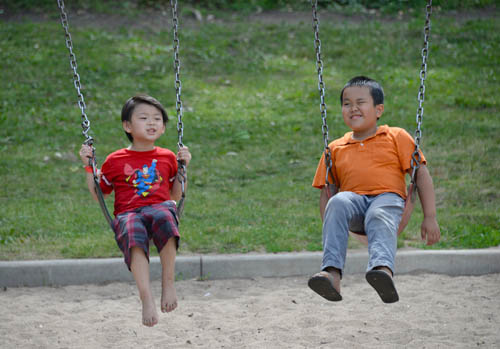The metro area’s regional parks and trails—all together one of the largest park systems in the nation—drew an impressive 47 million visits last year.

But missing from the throngs of visitors were people of color in numbers proportional to their share of the region’s total population. The shortfall is especially significant for recent immigrants to the Twin Cities area.
In the future, the disparity may widen. People of color are expected to make up 40% of the region’s population by 2040, compared with 24% in 2010.
The Metropolitan Council is responding by building on existing work of partner park agencies to broaden park use among a changing population. The Council took an important step in July when it adopted an “equity toolkit” for the Regional Parks System to help guide decisions about future projects and policy directions.
The Regional Parks System equity tool kit is…
…a set of questions and a process meant to clarify how regional park projects are advancing equity.
Equity means expanding access to opportunity for all people—all races, ethnicities, incomes, and abilities.
Toolkit measures potential needs, opportunities, responses and outcomes
The equity toolkit includes a series of questions that the Council will add to the application that partner agencies submit to the Council for grant funds. The equity toolkit is a way to measure potential needs and opportunities, how a project responds accordingly, and verifying the outcomes.
The questions in the toolkit ask partner park agencies for information that will help the Metropolitan Parks and Open Commission and the Council determine:
Sample feedback from study of regional park use by communities of color (2014)
- Knowing about the parks. “A lot of people are not really aware of regional parks.”
- Language. “I really want to go there, but it’s hard because of the language barrier.”
- Lack of transportation options. “If we don’t drive, we don’t have a way to go.”
- Religious practices. “We pray five times a day, and women are supposed to have a little cover when they pray outside.”
-
Populations currently underserved by the regional parks system
-
Progress in serving targeted populations
-
Innovative practices of park agencies that could successfully apply across the park system
-
Future directions for the parks system in pursuing greater equity.
The Metropolitan Parks and Open Space Commission and the Council will use the adopted toolkit in the process of awarding grant funds totaling approximately $25 million annually, beginning in the fall of 2016.
A successful regional parks system results from strong partnership
The Council oversees planning and funding of regional parks, and 10 cities, counties, and special park districts acquire and develop parkland and operate the parks for the public use.